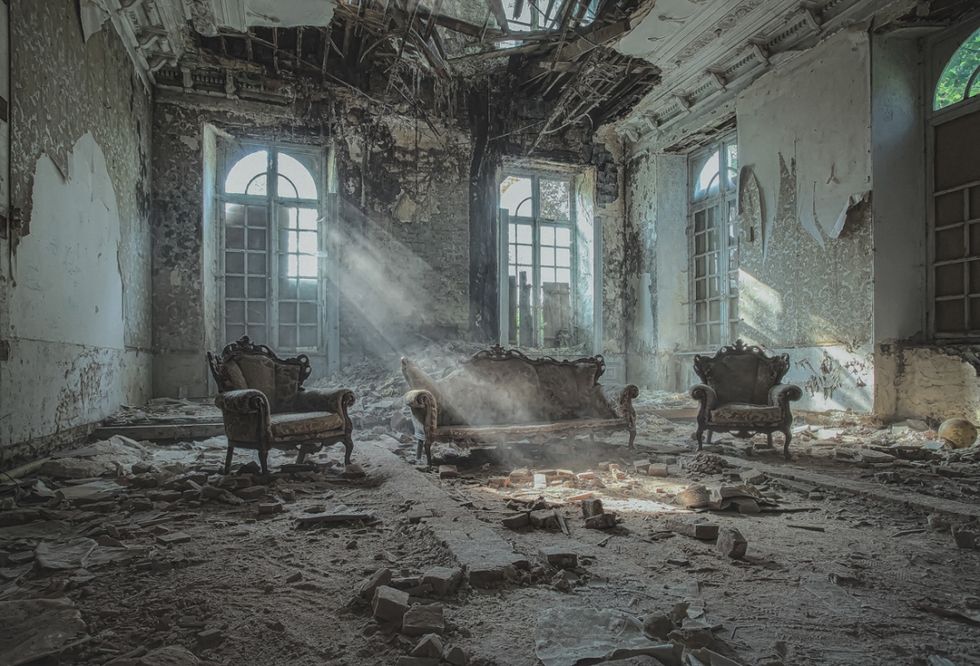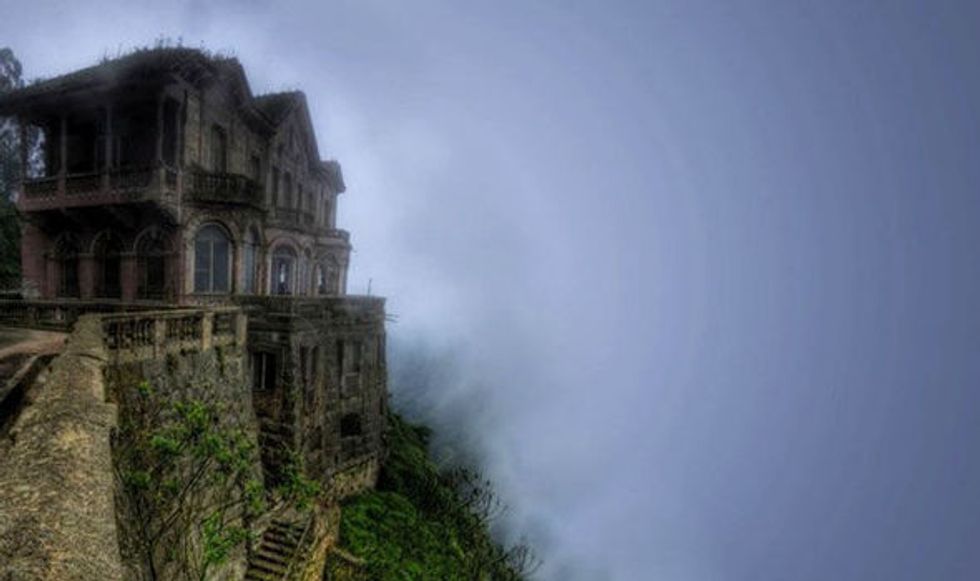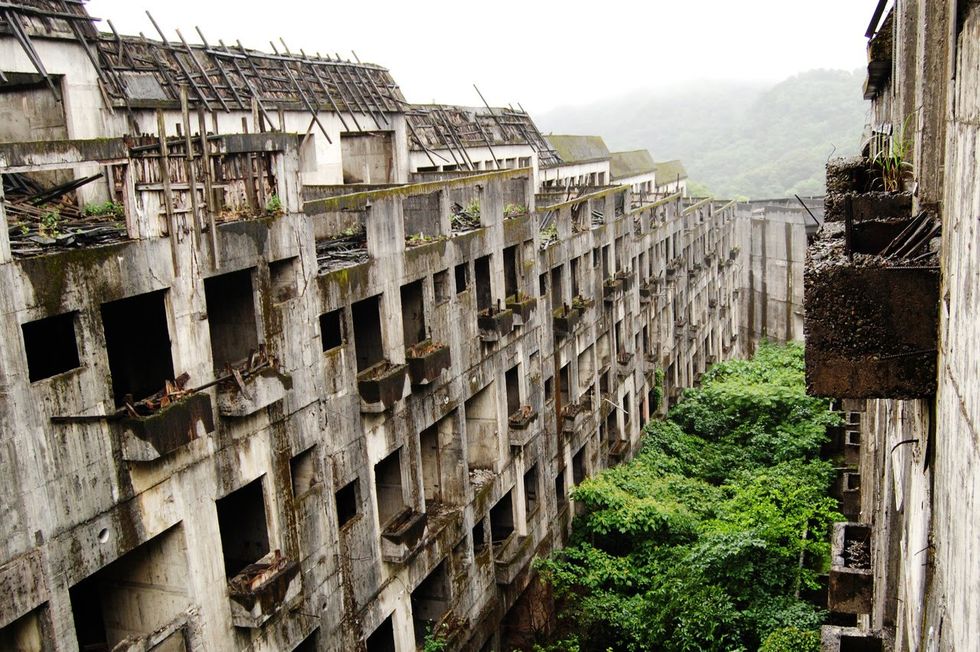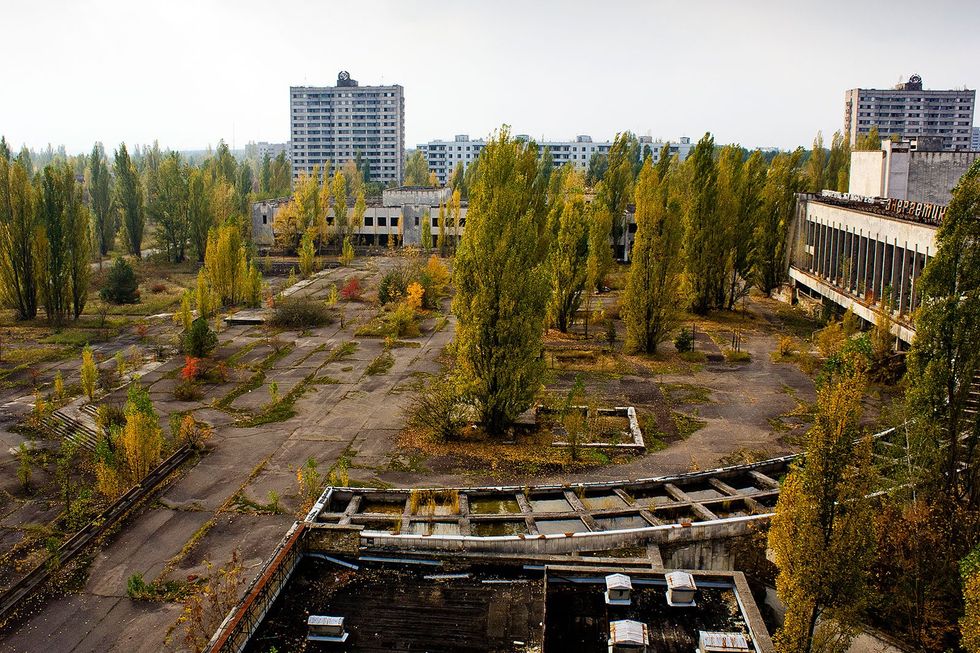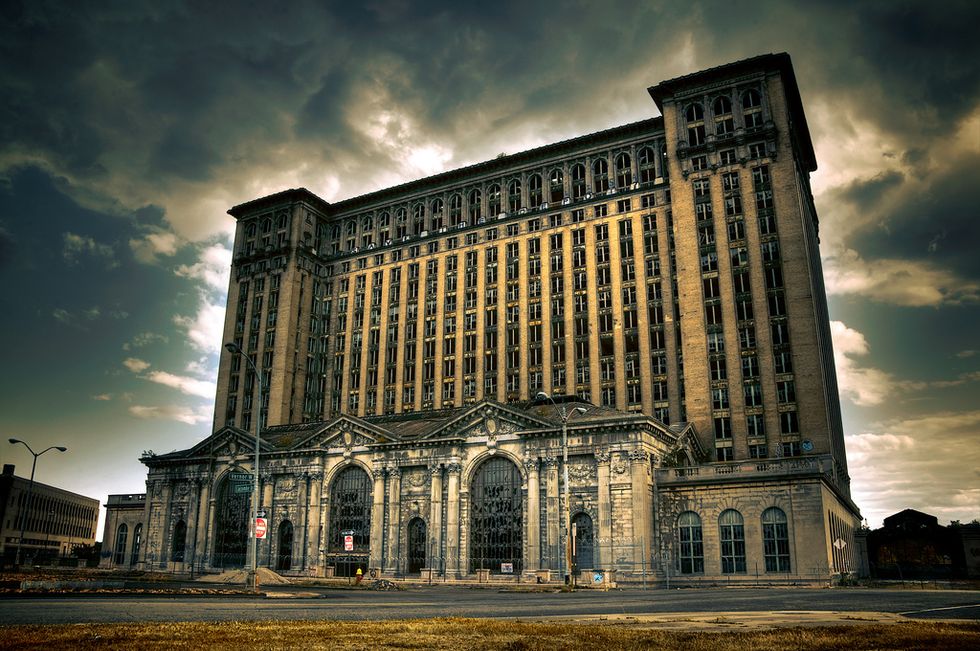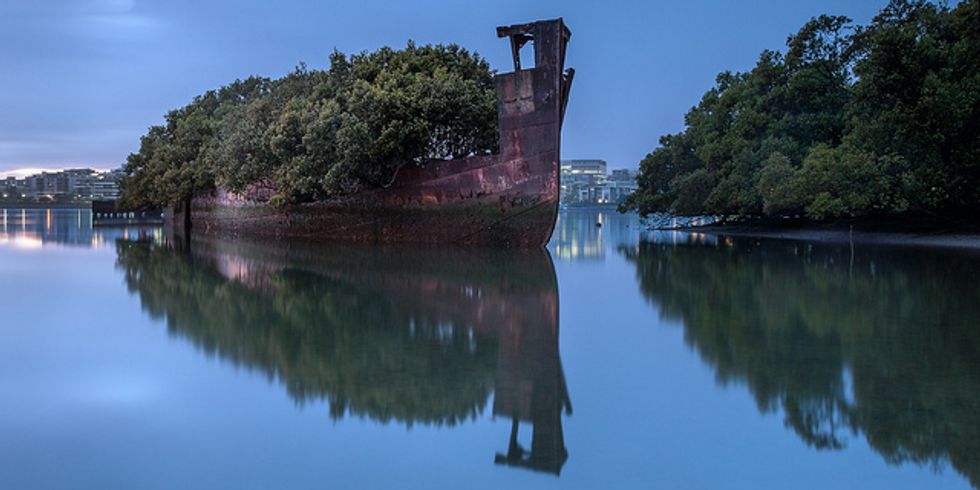Throughout history many lively and grand places have been built with seemingly endless purposes; theaters, museums, train stations, prisons, etc. They were the most innovative buildings of their time, however, as our knowledge and technology continue to advance these grandiose places become obsolete. Thus they are dealt with the way most outdated things are; they are left to wither and crumble as the Earth returns them to dust. The thing about abandoned places though, is that they somehow retain their former beauty but now with an undertone of danger and decrepitness they never had before. Nothing is more breathtaking, yet eerie than visiting an entirely discarded piece of time, so here are fifteen absolutely beautiful but terrifying abandoned places you can visit.
1. Salto Hotel, Colombia
There isn’t much information about this gorgeous mansion, but we do know that it was initially built in 1923 by an architect as a symbol of joy and eliteness that he felt the citizens displayed. The mansion stood for five years before being converted to a hotel in 1928; however, the plan to increase the estate to an eighteen-floor building fell through and eventually, the building was abandoned due to river contamination. In 2013, the structure was revisited and opened up as a museum which it still is to this day however no work has been on the original building so it can be seen in all its haunting glory. The appeal of this building is its location along the Bogota River, its beautiful architecture, and the train ride that you have to take in order to reach the building.
2. Hashima Island, Japan
In 1810, it was discovered that this island had access to undersea coal beds and this was a huge breakthrough at the time. Over the next 150 years coal was strategically mined from the island, and with the increase of workers on the mining, project buildings began to pop up to hold the workers and their families. As time went on, there was a very well established community living on the island of over 5,000 people. However, in the 1960’s the need for petroleum began to overpower the demand for coal and in 1974 the coal mine was officially close leaving the island full of empty buildings. For 35 years the island was entirely foreclosed, and no one was allowed to visit, but in 2009 the government approved the island to be opened for touring purposes. The primary appeal is all of the mostly intact buildings being reclaimed by nature.
3. Pripyat, Ukraine
This town was founded in 1970, as one out of nine nuclear cities surrounding Chernobyl Nuclear Power Plant. The town was officially proclaimed a city a few years late with a population of almost 50,000. In 1986, however, a significant meltdown occurred at the nuclear plant, and the whole city had to be evacuated. The area was officially put on lockdown due to the extreme amounts of radiation given off from Chernobyl. Today, short guided tours are given into Pripyat, which gives those who are curious a glimpse of the entirely abandoned city complete with a theme park. However, a word of caution about the surrounding forests and river as there have been many reports and speculations that the radiation has caused some gruesome animal mutations you may not want to encounter.
4. Michigan Central Station, USA
In 1913 this station was built to replace the previous station that had burned down. This was one of the busiest places in the area as it acted as the Grand Central Station of Michigan. Through the Great Depression and both the world wars, the station began to lose its charm and eventually ended up closing in 1988. Since then there have been several plans to renovate and several plans to demolish the building, but its fate has yet to be decided, so it stands slowly deteriorating. The main appeal of this site is the eeriness of walking through a vast train station that should be bustling, but there isn’t another soul in sight. The quietness can be deafening, but the pictures you can capture will be breathtaking.
5. Floating Forest, Australia
Located in Homebush Bay, this particular place used to be a ship breaking location used to dismantle old warships that served in World War II. One ship, in particular, the SS Ayrfield was created in 1911 and used to perform coal runs until it was converted to a transport ship during World War II. After the War, the ship was decommissioned and sent to Homebush Bay to be entirely dismantled. However, the ship was only partially stripped of parts and left, stuck in the mud. Over the years, plants began to sprout out

